Single-Cell Transcriptome Reveals the Heterogeneity of T Cells in Mice with Systemic Lupus Erythematosus and Neuronal Inflammation
- PMID: 39735894
- PMCID: PMC11675326
- DOI: 10.2147/JIR.S474211
Single-Cell Transcriptome Reveals the Heterogeneity of T Cells in Mice with Systemic Lupus Erythematosus and Neuronal Inflammation
Abstract
Introduction: Systemic lupus erythematosus is a heterogeneous autoimmune disease. A burst of autoimmune reactions in various systems can lead to severe clinical conditions closely associated with mortality. T cells serve as mediators that drive the occurrence and maintenance of inflammatory processes.
Methods: In this work, we employed single-cell transcriptome sequencing (scRNA-seq) involving 27704 cells from the brain and spleen tissues of MRL/lpr mice and 25355 healthy controls from BALB/c mice to explore the heterogeneity of T cells and their migration from the spleen to the brain.
Results: We identified a distinct group of double-negative T cells in systemic lupus erythematosus (SLE) mice that significantly expressed Eomes and other specific markers. We used the analysis of pseudotime trajectory and enrichment to show that double-negative T cells in SLE mice are strongly associated with cellular senescence and exhaustion. Additionally, we focused on the interactions among DNT, astrocytes, and microglia in the mice brain. We observed greater expression of MDK-related ligand‒receptor pairs between astrocytes and double-negative T cells, indicating that MDK may be a therapeutic target for treating neuroinflammation in SLE.
Discussion: This research sheds light on the intricate dynamics of immune responses in mice with SLE, specifically highlighting the role of double-negative T cells and their connection to cellular senescence. The exploration of interactions between T cells, astrocytes, and microglia in the mice brain unveils potential avenues for therapeutic intervention, particularly in addressing neuronal inflammation in SLE.
Keywords: SLE; T cell; neuroinflammation; single-cell transcriptome.
© 2024 Shi et al.
Conflict of interest statement
The authors declare no conflict of interest.
Figures





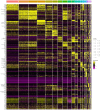
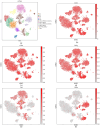

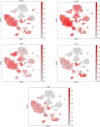

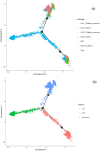
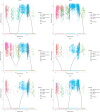

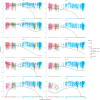









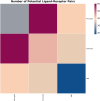

Similar articles
-
Double-Negative T (DNT) Cells in Patients with Systemic Lupus Erythematosus.Biomedicines. 2024 Jan 12;12(1):166. doi: 10.3390/biomedicines12010166. Biomedicines. 2024. PMID: 38255272 Free PMC article. Review.
-
Unique primed status of microglia under the systemic autoimmune condition of lupus-prone mice.Arthritis Res Ther. 2019 Dec 30;21(1):303. doi: 10.1186/s13075-019-2067-8. Arthritis Res Ther. 2019. PMID: 31888754 Free PMC article.
-
The T Cell Receptor Repertoire in Neuropsychiatric Systemic Lupus Erythematosus.Front Immunol. 2020 Jul 17;11:1476. doi: 10.3389/fimmu.2020.01476. eCollection 2020. Front Immunol. 2020. PMID: 32765512 Free PMC article.
-
Aberrant expansion of follicular helper T cell subsets in patients with systemic lupus erythematosus.Front Immunol. 2022 Sep 2;13:928359. doi: 10.3389/fimmu.2022.928359. eCollection 2022. Front Immunol. 2022. PMID: 36119056 Free PMC article.
-
Effector T-cell subsets in systemic lupus erythematosus: update focusing on Th17 cells.Curr Opin Rheumatol. 2011 Sep;23(5):444-8. doi: 10.1097/BOR.0b013e328349a255. Curr Opin Rheumatol. 2011. PMID: 21720245 Free PMC article. Review.
References
LinkOut - more resources
Full Text Sources

